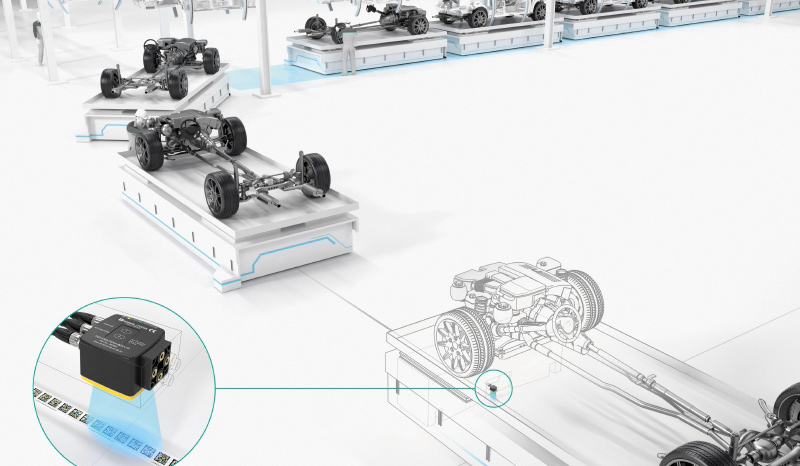AMR Navigation Refined
Content of This Article
AMR Navigation Refined
Data Matrix codes pack a tremendous amount of digital information into a postage-stamp-sized footprint. Found in seemingly endless commercial and consumer areas, such as warehouses, distribution centers, automotive, and production facilities, their full potential in industrial automation applications is only now being tapped. Want to elevate your logistics? Read on to learn how this powerful technology enhances the control of autonomous mobile robots (AMR) and automated guided vehicles (AGV).
Optical Guidance
When paired with 2-D camera technology, like the PGV and safePGV, Pepperl+Fuchs Data Matrix codes offer cutting-edge technology for the factory floor. What starts off as a simple strip of code tape with an adhesive backing offers submillimeter positional data that ensures your AMR or AGV is reliably guided along its path of travel. And when combined with control codes, colored lanes, or Data Matrix tags, the system achieves added redundancy.

PGV and safePGV positioning systems from Pepperl+Fuchs
To initiate starts, stops, and turns, control codes can be installed alongside Data Matrix code tape. They provide full positional information and output a user-specified number whenever a control code is scanned. Data Matrix tags, made up of 16 Data Matrix squares, offer the widest range of tolerance on the X and Y axes. Not only does this allow camera-based systems to stay on track, it also provides redundancy if some of the code squares become damaged or unreadable. New “Extended” tags offer ten times more numerical information, so positional data can be provided for an area that is ten times larger or the same area can be resolved with ten times more precision.
Preventative Maintenance
Various positional output data is standard to help navigate even the toughest routes, but quality recognition can modernize the entire process. Until now, the general feedback from scanning brand new or damaged codes was black and white—“position” or “no position.” A new code quality output capability introduces preventative maintenance for added reliability.
The new capability uses a grade system (1 to 7) to determine if the codes are in good condition or in need of repair. This data can be logged to better understand potential issues in a specific area, which creates the possibility to couple the quality data with IoT for automated ordering of replacement code tape.
Subscribe to our newsletter and receive regular news and interesting facts from the world of automation.
